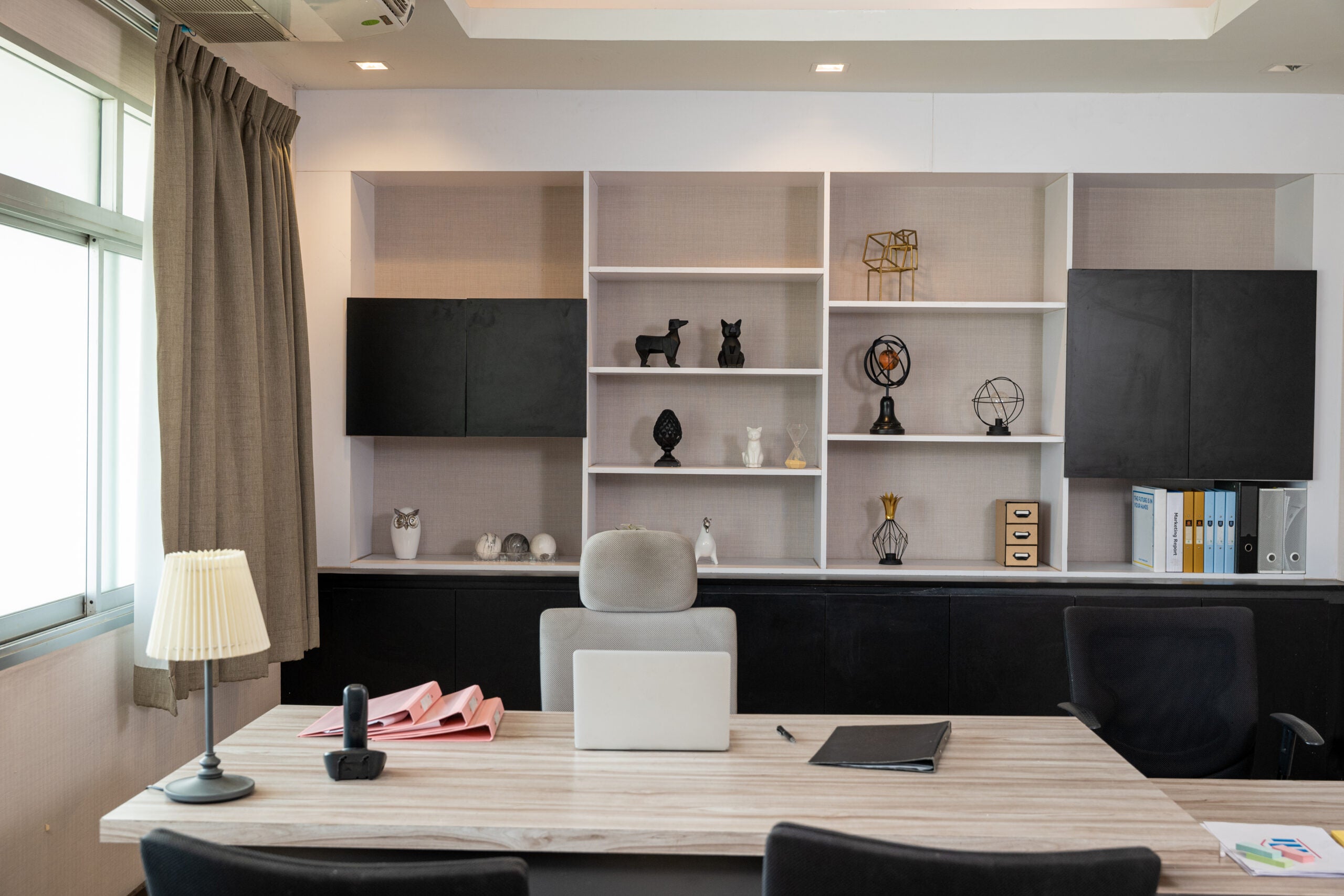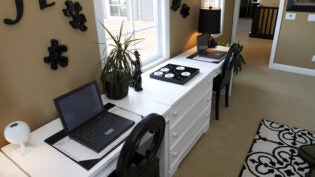How to Design a Mentally Restorative Home Office
By: Ryan Kidman

The hustle is real, but so is burnout. In the age of hybrid schedules, remote work, and side hustles galore, the workspace has evolved into more than just a desk and a Wi-Fi signal. It’s now a sanctuary, a creative lab, and for many, the place where inspiration and exhaustion often collide. As stress levels rise and mental health takes centre stage, the spotlight has turned to how workspace design can support wellness, not just productivity.
Nature’s Remedy for Stress
There’s a reason why a walk in the woods feels like a breath of fresh air, literally. Biophilic design taps into this very instinct, weaving elements of nature into interiors to boost wellbeing. In a workspace, this can be as simple as introducing a few hardy houseplants or going full-on with living walls, natural wood features, and abundant daylight.
Biophilic spaces have been shown to reduce anxiety, lower blood pressure, and even improve cognitive function. For entrepreneurs and remote workers who often push themselves to the brink, these natural touches offer more than aesthetic charm as they actively fight fatigue and foster calm. Think a reclaimed wood desk, leafy greens near your screen, and artwork that channels earthy tones and forest scenes.
The Power of Natural Materials
The materials that surround a workspace can either drain or energise. Synthetic finishes, harsh lighting, and plastic-heavy furnishings often leave the space feeling clinical and uninspired. On the flip side, natural materials bring warmth, texture, and tactile comfort. They also support a healthier indoor environment, with lower levels of off-gassing and better air quality.
Oak flooring, for instance, can make a room feel grounded and serene. Engineered wood is a smart option for home offices for several reasons. It looks stunning, is more sustainable than solid hardwood, and handles temperature fluctuations better, which is handy if your workspace is in the loft or a converted garage. Pair that with a jute rug underfoot, a ceramic cup of tea in hand, and suddenly, work doesn’t feel quite so taxing.
Ergonomic Furniture That Supports, Not Strains
Comfort isn’t a luxury when it comes to furniture, it’s a necessity. Long hours hunched over a laptop or perched on a dining chair are a fast track to tension headaches, stiff joints, and ultimately, burnout. Investing in ergonomic furniture isn’t just about posture; it’s about protecting energy levels, staying focused, and feeling good while working.
The key players? An adjustable chair that supports the lower back, a desk that allows for proper elbow placement, and ideally, a sit-stand option to keep the body moving. Add-ons like monitor risers, footrests, and wrist supports might seem like small tweaks, but they all add up to a far more restorative and sustainable working environment.
Design with the Senses in Mind
A mentally nourishing workspace doesn’t stop at sight and touch; it should cater to all the senses. Soft, ambient lighting can help regulate circadian rhythms and reduce eye strain. Scents like lavender, rosemary, or citrus can enhance focus or encourage calm, depending on what’s needed. Acoustic panels, rugs, or even strategically placed bookshelves can dampen noise and prevent that tinny echo that’s common in minimalist rooms.
Temperature also matters more than most realise. Being too hot or too cold can be a huge distraction, nudging cortisol levels up and productivity down. Thermal curtains, draft-proofing, and breathable flooring like engineered wood or cork can help maintain a stable, comfortable climate.
Personal Touches Without the Clutter
There’s a fine line between personalisation and visual chaos. A few meaningful items, like photos, art, inspirational quotes, can make the space feel emotionally grounding. But when desks get overloaded with paper piles, half-used notebooks, and tangled chargers, the mind tends to follow suit.
The trick is to blend practicality with personality. Use closed storage to hide the mess, go for neutral colour palettes to keep the vibe calm, and bring in elements that resonate on a deeper level. These small, soulful touches can offer a surprising lift when the to-do list gets heavy.
Designing for Recovery, Not Just Efficiency
Perhaps the most important shift is the mindset that design is about recovery as well as efficiency. The most successful workspaces aren’t the ones crammed with productivity hacks, but those that allow for pause, breath, and reset.
This could be a cosy reading nook for brainstorming breaks, a yoga mat tucked in the corner for midday stretches, or even a window seat with a view to rest the eyes and refresh the mind. Work doesn’t always have to be go-go-go; sometimes, stepping back is what allows the best ideas to step forward.
Stress Less, Work Better
Burnout might be an occupational hazard in modern life, but workspace design can be a powerful line of defence. By embracing biophilic principles, natural materials, ergonomic support, and multi-sensory comfort, it’s possible to create a space that fuels both creativity and calm. The goal isn’t to build an office that looks good on Instagram; it’s to build one that feels good in real life.
Because when the workspace nurtures the person, the work tends to take care of itself.
589 Views











